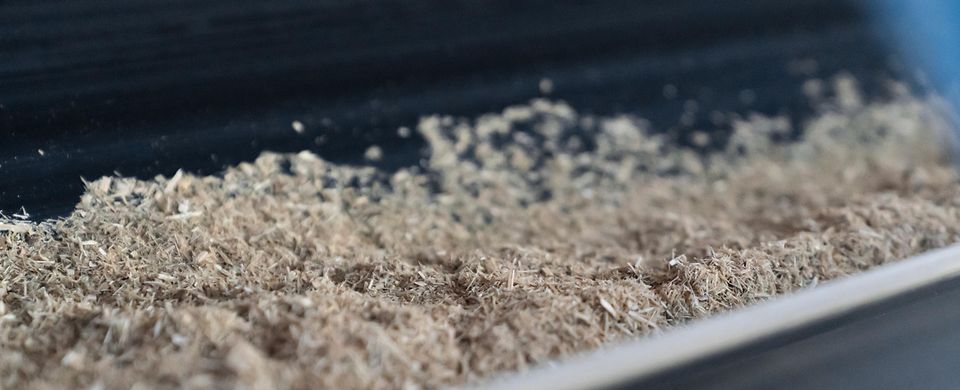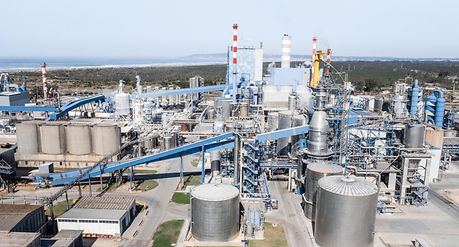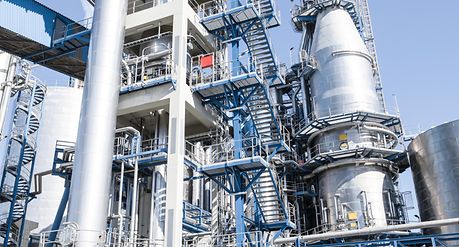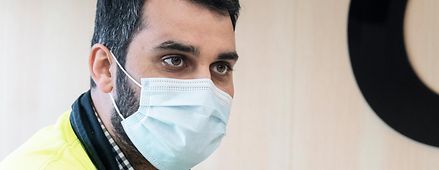“Our aim here is to have zero waste and zero use of fossil fuels by 2030. Circularity at our mill is at the top of our list for all departments.”
Paulo Jordão,
Industrial Director,
Celbi mill
Altri’s Celbi mill, situated near Figueira da Foz on Portugal’s Atlantic coast, is a classic example of the concept of the circular bioeconomy in action. Here financial and environmental sustainability have gone hand-in-hand for decades, and circularity and sustainability are simply the norm. In its latest move the mill has installed a unique technology from ANDRITZ – the A-ConApex concept – to utilize cellulosic waste by turning it into quality pulp.
“Our aim here is to have zero waste and zero use of fossil fuels by 2030,” says Paulo Jordão, Industrial Director, Celbi mill. “Circularity at our mill is at the top of our list for all departments.”
And circularity is certainly not a new concept at the Celbi mill. Jordão continues, “I started my career at the mill here a while ago as a young engineer, and the mindset at Altri has always been one of optimizing production and making savings, reusing and recycling wherever possible – whether it be water, energy, or raw materials.”
The overall company strategy at Altri encompasses four pillars: Continuous Improvement, Teamwork, Knowledge, and Innovation. It was under all these pillars that Celbi decided it had to find a way to utilize the waste in the pulping process, namely sawdust, fines, and rejects. Sofia Rebola, Director of Production, Celbi says, “In 2019, we decided that we would like to find a better solution for using the waste and rejects in the process. So we began some dedicated laboratory trials at Celbi to see what the possibilities were of converting the waste into pulp.
“We were encouraged by the results we were achieving, and after a year of intense laboratory work we believed that we could bring significant improvements to the mill by utilizing the waste.”
After internal discussions, deeper collaboration took place with ANDRITZ cooking experts in Finland and a solution was found by creating the A-ConApex continuous cooking system, the first of its kind in the world. With this technology, a mill can fully utilize all the cellulose-containing material not typically utilized in the pulp production process.
Earlier this year, the first A-ConApex system was installed and integrated into the existing ANDRITZ Lo-Solids Cooking process at Celbi, which was first started up at the mill in 2017. The new concept fits perfectly into the company strategy of using all possible waste, in this case sawdust, fines, and rejects that would normally either be burnt or sent to landfill.
Paulo Jordão,
Industrial Director,
Celbi mill
Sofia Rebola,
Director of Production Celbi
The ANDRITZ A-ConApex system is a fully independent continuous cooking system installed next to the existing digester at the Celbi mill. Quite simple in its design and make-up, the system has just one conveyor, a materials bin, a cooking reactor, a steam feed, a mixer and two pumps.
Mika Pärssinen, ANDRITZ Project Manager, Fiberline says, “The A-ConApex system is purely designed to use the waste from the mill processes and turn it into pulp. This is a very simple process which utilizes high temperature cooking in the reactor.”
Start-up of the system took place in October 2021. Fiberline Manager at Celbi, Daniel Teixeira Marcos says, “ANDRITZ did an amazing job, and the technical side of things went very well including commissioning. We of course had a few small challenges which are to be expected, but there were no big jams or blockages.
“Our digester operators here at Celbi are very experienced and they are very happy with how easy the A-ConApex system is to operate, in fact, compared to the main digester they liken the system to a toy!”
It may be simple, and easy to operate, however, this powerful addition to the cooking plant has made all the difference to the mill when it was looking at turning what was once waste into valuable, quality pulp. In fact utilizing sawdust, fines and rejects from the process, Celbi has increased pulp capacity by an impressive 2.5%, adding up to 60 tonnes per day of extra production.
The ANDRITZ A-ConApex system fits perfectly into our strategy at the mill,” says Jordão. “Instead of burning our fines and sawdust, we are now repossessing them, saving the material that we have already paid for. It means we are actually reducing wood consumption, or increasing production, it depends which way you look at it.”
Pärssinen says, “Together with the Celbi team, we have used our decades of pulp process experience at ANDRITZ to create what is a really simple and ingenious add-on to a pulp mill that can bring real value to a mill with a short payback time.”
Daniel Teixeira Marcos,
Fiberline Manager, Celbi
Mika Pärssinen,
ANDRITZ Project Manager, Fiberline
Gabriel Sousa, Executive Director for Innovation and Technological Development at Altri, says, “This really was a great project for us. It goes to the core depths of our principles; to be lean and efficient, and it fits in clearly with our aim to create a circular economy at our pulp mills.”
“The implementation of the A-ConApex system was made possible because of the set-up of the pulp processing line we have at the Celbi mill. This allowed to implement the system with only a simplified set of equipment and no further downstream equipment was needed, like blowtank or washers. There is a serendipity about the technology from ANDRITZ and process from Celbi that made it possible to achieve what might be unthinkable at a pulp mill, but together we made it happen.”
Sousa comments on the collaboration between Altri and ANDRITZ to create the unique A-ConApex system, “This system is a groundbreaking prototype, both ANDRITZ and Altri have learned a lot about the design and implementation, and the next generation of A-ConApex will be refined and even better.
“This project was only possible due to the close collaboration between Celbi and ANDRITZ; We could not develop this type of technology on our own. We brought in all our technical departments for this project, from innovation to production and we have worked closely together to find solution with ANDRITZ. We believe that this type of open collaboration is the key to success and the working model that makes changes happen faster.”






